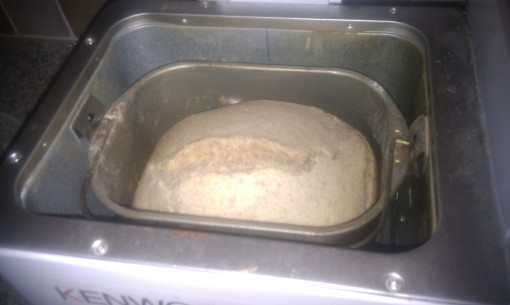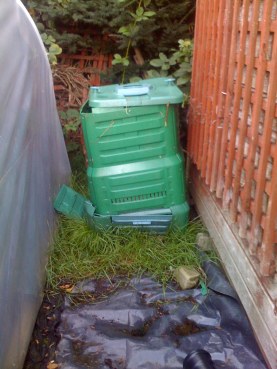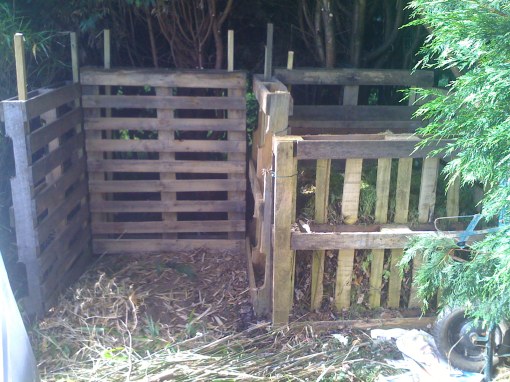I’ve finally tried the Real Bread recipe from my “Baking cheaper, better bread” post. I have to admit I was pretty sceptical. about a third of the yeast I usually use, no sugar to feed it and no butter? I put it into my standard one-hour breadmaker cycle and was expecting a flat, solid, uninspiring loaf.
Opening the breadmaker was not very encouraging, it had risen less than my usual recipe, but not by much:

It wasn’t a nice glossy brown on top, but it did look encouragingly bread-shaped:

Time to open it up then! The best reflection on taste and texture was that the loaf was half-gone by the time I managed to get a pic. It was a lot less crumbly than my usual loaf, tasted nice, was pretty light, and sliced nicely. Pretty much all you could want:

So, it’s edible, how much does it cost? We’re using the same prices as my original “How much does it cost to bake your own bread” recipe, minus the milk, butter, sugar, and with the new Doves Farm large packets of yeast we’re getting from Waitrose – 125g for 99p.
| 250g Strong White Bread Flour |
11p |
| 250g Strong Wholemeal Bread Flour |
16p |
| 1 tsp salt |
0.2p |
| 5g yeast |
4p |
| Electricity |
3.14p |
| Total |
35p |
So this “Real Bread” recipe costs only 35p in comparison to my usual recipe’s 78p. That’s a pretty significant difference, so it’s our new favourite – until the next comes along! Any other suggestions?
Almost forgot to add – now it doesn’t use any chilled ingredients it’s even more green, and it can be made out of standard store cupboard ingredients – even better for our Peak Oil prep.




 This book is one of my guilty little secrets! How can anyone be really serious about gardening with a book from Reader’s Digest?
This book is one of my guilty little secrets! How can anyone be really serious about gardening with a book from Reader’s Digest?


